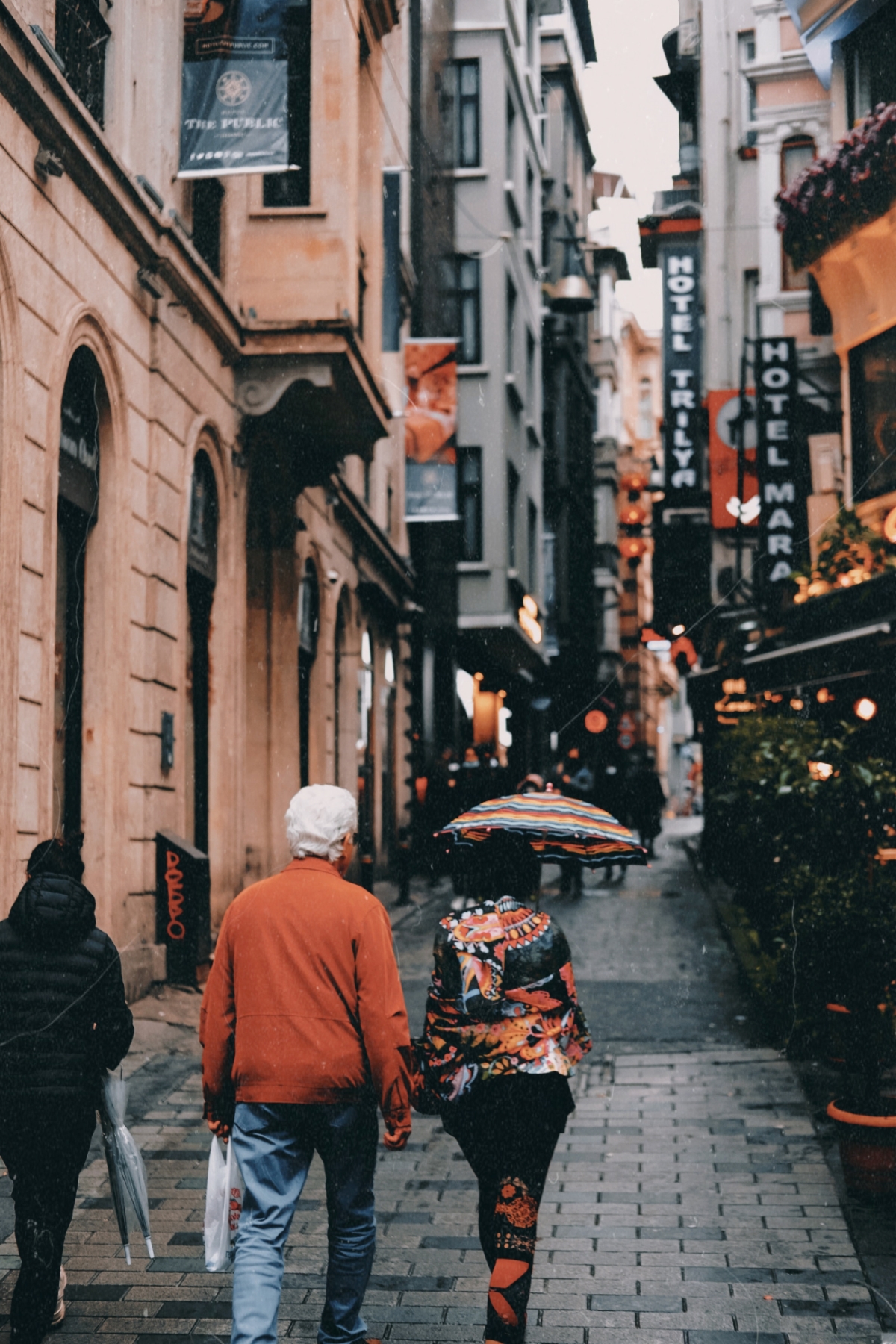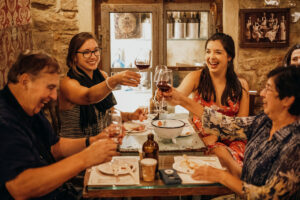Last Updated on November 10, 2025 by Emma Fajcz | Published: December 27, 2022
Naples is a compact city, so it’s luckily easy to get around on foot or by public transport. But choosing the right neighborhood for you to lay your head down after a long day of exploration is key. Read on for a quick but comprehensive guide on the best areas to stay in Naples.

Before we go into the details of each neighborhood, a general word of advice. When choosing where to stay, we recommend considering the vibe of the area, the public transport available, and its proximity to the port or central station if you’re looking to take some day trips.
Centro Storico
The most centrally located area for sightseeing is, well, the historical center. Locals and tourists alike mix and mingle in this bustling and dense city center, classified as a UNESCO world heritage site. B&Bs and hotels sell out quickly here, so make sure you book ahead!
For wandering around, the best area to pick is anywhere between Via Toledo and Via Duomo. If you plan to take day trips from the central station (like Pompeii or Sorrento), choose a place closer to Piazza Garibaldi.
The center is very busy, and the most popular places for weekend nightlife are Piazza Bellini, Via Mezzocannone, Largo Banchi Nuovi, and Piazza San Domenico Maggiore. Avoid these particular streets and squares when booking if you plan on having quiet evenings. (Or, if you love going out, book nearby!)
Pros: Centro historico is located in the center of the city. This means you can walk pretty much anywhere from here and most monuments and sightseeing are nearby.
Cons: It’s a busy part of the city so can be quite noisy. Also, keep in mind that accommodation here sells out quickly so plan ahead.

San Ferdinando (Piazza Municipio – Santa Lucia)
If you’re planning on taking ferries for day trips down the coast or to the islands, San Ferdinando is your best bet. The area spanning from Piazza Municipio to Castel dell’Ovo is home to more modern and taller buildings than the historical center. It’s close to the ports, the seaside, the oldest continuously active theater in Europe (San Carlo), and the majestic Piazza del Plebiscito. There are both luxury hotels in the small area of Santa Lucia, or more reasonably-priced places near Piazza Municipio or on Via Chiaia.
Pros: San Ferdinando is near many beautiful monuments and is well-connected to the port.
Cons: It is located farther away from the central station (compared to the historical center).
Montecalvario
Montecalvario is a neighborhood that includes the spacious Piazza Dante, the area near Montesanto station, and some of the Quartieri Spagnoli.
The Quartieri Spagnoli is a grid of close-set apartment buildings and narrow cobblestone streets that hugs the side of the hill. The Quartieri Spagnoli (Spanish Quarter) gets its name from its use as barracks for Spanish soldiers in the 16th century. The lower part of the neighborhood (closer to Via Toledo) is jam-packed with awesome restaurants and countless spritz bars.
The area between Piazza Dante and Montesanto is home to the Pignasecca market, a historical market district that is packed by day but clears out in the evening. Staying around Montesanto and the Pignasecca market is a great choice for a centrally located neighborhood that is surprisingly peaceful in the evening. Plus, the funicular from Montesanto station takes you up the hill for a spectacular view from the lookout point of San Martino.
Pros: Montecalvario offers lots of good restaurants. Yet it is pretty quiet in the evening around Montesanto and Pignasecca.
Cons: The lower area of Quartieri Spagnoli is noisy in the evening.

Chiaia
Chiaia is a chic neighborhood on the sea, with luxury shopping and trendy places to eat. It’s home to some high-end nightlife around the street Vico Belledonne a Chiaia (an area colloquially called barretti di Chiaia). It’s a short walk to the area of San Ferdinando and the sea, but it’s a little bit farther away from the historical center. However, there is a metro stop (Piazza Amedeo, which takes you to Montesanto station). Stay here if you want to be immersed in a seaside neighborhood with an upscale vibe.
Pros: Chiaia is packed with trendy places to eat and drink.
Cons: The transport access to the center from Chiaia is not great.

Materdei
Materdei is a family-friendly area, less crowded and chaotic than many other neighborhoods but just a short metro ride away from the historical center. Choose a place close to the Materdei metro stop for a calm stay in Naples and to be close to one of the best pizzerias in Naples (Starità). But be aware that the metro closes around 11 pm!
Pros: Materdei is more quiet and more residential, but still has plenty of character.
Cons: Getting back at night might be a challenge or costly as the metro closes early at night.
Vomero
The area up the hill is centered around two main pedestrian thoroughfares, Via Scarlatti and Via Luca Giordano. Its wide, tree-lined streets are a contrast to the historical center’s density, but Vomero is a busy and bustling area as well. The historical market Antignano is worth a look if you choose to stay in the neighborhood. Pub-style eateries like Murphy’s Law (Via Luca Giordano, 156) and Loop – Officina della Birra are popular in this neighborhood for food and nightlife. Vomero has access to both the funiculars and the metro, but be aware that the funicular closes at 10 pm and the metro between around 11 pm. If you go out to the historical center and miss the train, that walk up the hill is no joke!
Pros: Vomero is chic with a classic European vibe and lots of fun pub-style restaurants.
Cons: Getting back at night might be a challenge or costly as the metro and funicular close early at night.
Wherever you choose to stay in Naples, you’ll be able to have a great experience with delicious food, fun nightlife, and lots to do. We hope this guide was helpful in making your choice. Buon viaggio!

Explore International Cuisine Like a Local
Join one of our top-rated food tours that are offered in many cities throughout the world! With the help of our expert local guides, you’ll get to see, hear, and taste your way through these cities and learn about their fascinating histories and cultures.









